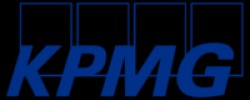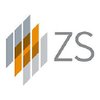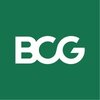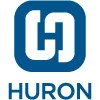Filter interviews by
KPMG Global Services Associate Consultant Interview Questions and Answers
13 Interview questions
I have conducted benchmarking processes in the areas of sales performance, customer satisfaction, and operational efficiency.
Benchmarked sales performance against industry competitors to identify areas for improvement
Analyzed customer satisfaction metrics to compare against industry standards
Evaluated operational efficiency by benchmarking processes against best practices
Implemented recommendations from benchmarki...
Lessee and lessor accounting under US GAAP differ in treatment of lease assets and liabilities.
Lessee records lease as right-of-use asset and lease liability on balance sheet
Lessor records lease as finance lease or operating lease based on criteria
Lessee recognizes interest expense and amortization of right-of-use asset
Lessor recognizes interest income and depreciation of leased asset
Lessee discloses additional le...
CSRF and XSS are common web security vulnerabilities. E-commerce websites require a multi-layered approach to security.
CSRF (Cross-Site Request Forgery) is an attack where a user is tricked into performing an action on a website without their knowledge or consent.
XSS (Cross-Site Scripting) is an attack where malicious code is injected into a website, allowing an attacker to steal sensitive information or take cont...
ERP is an enterprise resource planning system that integrates business processes and data into a single system.
ERP helps organizations streamline their operations and improve efficiency
It provides a centralized database for all business processes
ERP can automate tasks such as accounting, inventory management, and human resources
Examples of ERP systems include SAP, Oracle, and Microsoft Dynamics
What people are saying about KPMG Global Services





Transition from ASC 840 to ASC 842 involves changes in lease accounting standards.
ASC 840 is the old lease accounting standard, while ASC 842 is the new standard introduced by FASB.
ASC 842 requires lessees to recognize most leases on their balance sheets as assets and liabilities.
The transition involves reassessment of lease terms, discount rates, and classification of leases.
Companies need to disclose more inform...
ASC 842 is a standard for lease accounting that requires lessees to recognize assets and liabilities for most leases.
ASC 842 was issued by the Financial Accounting Standards Board (FASB) in 2016.
It requires lessees to recognize lease assets and liabilities on the balance sheet.
The standard classifies leases as either finance leases or operating leases.
Finance leases are similar to capital leases under the previous...
Enterprise value is the total value of a company, including debt and equity, while equity value is the value attributable to shareholders.
Enterprise value includes debt, equity, and cash, while equity value only includes the value attributable to shareholders.
Enterprise value is used to determine the total value of a company, while equity value is used to determine the value available to shareholders.
Enterprise va...
The balance sheet (BS), income statement (PL), and cash flow statement (CFS) are interconnected financial statements that provide a comprehensive view of a company's financial health.
The balance sheet shows a company's assets, liabilities, and equity at a specific point in time.
The income statement shows a company's revenues, expenses, and net income over a period of time.
The cash flow statement shows the inflows ...
Cashflow is crucial for a business as it ensures liquidity, financial stability, and ability to meet obligations.
Cashflow helps in managing day-to-day expenses and operational costs.
It allows for timely payment of bills, salaries, and other financial obligations.
Positive cashflow indicates financial health and ability to invest in growth opportunities.
Negative cashflow can lead to financial distress, inability to ...
Accounts specific to media industry involve managing revenue and expenses related to advertising, subscriptions, and content production.
Understanding revenue streams from advertising sales, sponsorships, and partnerships
Managing expenses for content production, licensing fees, and distribution costs
Analyzing subscriber growth and retention rates to forecast revenue
Tracking royalties and licensing agreements for co...
KPMG Global Services Associate Consultant Interview Experiences
34 interviews found
(2 Questions)
- Q1. Transition from ASC 840 to ASC 842
- Ans.
Transition from ASC 840 to ASC 842 involves changes in lease accounting standards.
ASC 840 is the old lease accounting standard, while ASC 842 is the new standard introduced by FASB.
ASC 842 requires lessees to recognize most leases on their balance sheets as assets and liabilities.
The transition involves reassessment of lease terms, discount rates, and classification of leases.
Companies need to disclose more information...
- Q2. Difference between lessee and lessor accounting under US GAAP
- Ans.
Lessee and lessor accounting under US GAAP differ in treatment of lease assets and liabilities.
Lessee records lease as right-of-use asset and lease liability on balance sheet
Lessor records lease as finance lease or operating lease based on criteria
Lessee recognizes interest expense and amortization of right-of-use asset
Lessor recognizes interest income and depreciation of leased asset
Lessee discloses additional lease i...
(1 Question)
- Q1. Detailed accounting of ASC 842
- Ans.
ASC 842 is a standard for lease accounting that requires lessees to recognize assets and liabilities for most leases.
ASC 842 was issued by the Financial Accounting Standards Board (FASB) in 2016.
It requires lessees to recognize lease assets and liabilities on the balance sheet.
The standard classifies leases as either finance leases or operating leases.
Finance leases are similar to capital leases under the previous stan...
Listening, Speaking test , aptitude test , reasoning
(2 Questions)
- Q1. Related to my resume
- Q2. Mostly about financial statements
(2 Questions)
- Q1. Situational based questions
- Q2. Techinal knowledge from my subject
(2 Questions)
- Q1. About my resume
- Q2. About Job role and all
Interview Preparation Tips
I applied via Referral and was interviewed in Dec 2024. There were 2 interview rounds.
(2 Questions)
- Q1. Introduce yourself?
- Q2. Which benchmarking process's have you done?
- Ans.
I have conducted benchmarking processes in the areas of sales performance, customer satisfaction, and operational efficiency.
Benchmarked sales performance against industry competitors to identify areas for improvement
Analyzed customer satisfaction metrics to compare against industry standards
Evaluated operational efficiency by benchmarking processes against best practices
Implemented recommendations from benchmarking st...
(2 Questions)
- Q1. Introduce yourself?
- Q2. Tell me about your past experience related to benchmarking?
- Ans.
I have experience in benchmarking market trends and competitor performance to identify areas for improvement.
Conducted market research to analyze competitor pricing strategies
Utilized industry benchmarks to evaluate company performance
Identified key performance indicators to measure success
Implemented changes based on benchmarking data to improve business outcomes
Interview Preparation Tips
I applied via Referral and was interviewed in Sep 2024. There were 2 interview rounds.
(4 Questions)
- Q1. Enterprise value to equity value
- Ans.
Enterprise value is the total value of a company, including debt and equity, while equity value is the value attributable to shareholders.
Enterprise value includes debt, equity, and cash, while equity value only includes the value attributable to shareholders.
Enterprise value is used to determine the total value of a company, while equity value is used to determine the value available to shareholders.
Enterprise value i...
- Q2. Linking of BS, PL and CFS
- Ans.
The balance sheet (BS), income statement (PL), and cash flow statement (CFS) are interconnected financial statements that provide a comprehensive view of a company's financial health.
The balance sheet shows a company's assets, liabilities, and equity at a specific point in time.
The income statement shows a company's revenues, expenses, and net income over a period of time.
The cash flow statement shows the inflows and o...
- Q3. Impact on Financial statements if raised 10 million additionally
- Ans.
Raising 10 million will increase assets and equity on the balance sheet, but also increase liabilities if borrowed.
Assets will increase by 10 million, reflecting the additional cash or investments received.
Equity will increase by 10 million if the funds are raised through equity financing.
Liabilities will increase by 10 million if the funds are raised through debt financing.
Income statement will not be directly impacte...
- Q4. Financial ratios
Preparing a financial model
(3 Questions)
- Q1. How would you approach a company's financial data analysis as an ACON to identify areas of improvement?
- Ans.
As an ACON, I would approach a company's financial data analysis by following these steps:
1. Gather all relevant financial data, including income statements, balance sheets, and cash flow statements.
2. Analyze the data to identify key financial metrics and trends, such as revenue growth, profit margins, and cash flow patterns.
3. Compare the company's financial performance to industry benchmarks and competitors to ident...
- Q2. Introduce yourself
- Q3. Questions around Pass Through certificates and similar financial instruments
Interview Preparation Tips
2) There will be both functional and technical queries based on the profile you apply for
3) The technical questions are picked from the requirements posted in JD
4) Functional will be around your resume/CV
I applied via Campus Placement
Business case, finance
- Q1. Servicenow GlideAjax
- Q2. Servicenow GlideAggregate
(2 Questions)
- Q1. Importance of Cashflow
- Ans.
Cashflow is crucial for a business as it ensures liquidity, financial stability, and ability to meet obligations.
Cashflow helps in managing day-to-day expenses and operational costs.
It allows for timely payment of bills, salaries, and other financial obligations.
Positive cashflow indicates financial health and ability to invest in growth opportunities.
Negative cashflow can lead to financial distress, inability to pay d...
- Q2. What is NWC and how it is calculated.
- Ans.
NWC stands for Net Working Capital, it is calculated by subtracting current liabilities from current assets.
NWC = Current Assets - Current Liabilities
Current assets include cash, accounts receivable, and inventory
Current liabilities include accounts payable and short-term debt
A positive NWC indicates a company's ability to meet its short-term obligations
A negative NWC may indicate potential liquidity issues
(2 Questions)
- Q1. What are business rule
- Q2. Asked about the ACL
Basic logical & quantitative reasoning
KPMG Global Services Interview FAQs
Some of the top questions asked at the KPMG Global Services Associate Consultant interview -
The duration of KPMG Global Services Associate Consultant interview process can vary, but typically it takes about less than 2 weeks to complete.
Tell us how to improve this page.
KPMG Global Services Interviews By Designations
- KPMG Global Services Associate Consultant Interview Questions
- KPMG Global Services Consultant Interview Questions
- KPMG Global Services Audit Associate Interview Questions
- KPMG Global Services Assistant Manager Interview Questions
- KPMG Global Services Analyst Interview Questions
- KPMG Global Services Senior Associate Interview Questions
- KPMG Global Services Senior Analyst Interview Questions
- KPMG Global Services Associate2 Interview Questions
- Show more
Interview Questions for Popular Designations
- Software Developer Interview Questions
- Software Engineer Interview Questions
- Consultant Interview Questions
- System Engineer Interview Questions
- Associate Software Engineer Interview Questions
- Associate Interview Questions
- Senior Associate Interview Questions
- Project Engineer Interview Questions
- Show more
Overall Interview Experience Rating
based on 31 interview experiences
Difficulty level
Duration
Associate Consultant Interview Questions from Similar Companies
KPMG Global Services Associate Consultant Reviews and Ratings
based on 225 reviews
Rating in categories
|
Assistant Manager
3.1k
salaries
| ₹18.2 L/yr - ₹34 L/yr |
|
Consultant
3k
salaries
| ₹12.2 L/yr - ₹22 L/yr |
|
Associate Consultant
2.4k
salaries
| ₹8.5 L/yr - ₹16.2 L/yr |
|
Analyst
1k
salaries
| ₹3.5 L/yr - ₹7.6 L/yr |
|
Senior Analyst
948
salaries
| ₹5.7 L/yr - ₹12.5 L/yr |

Deloitte

Ernst & Young

PwC

KPMG India
- Home >
- Interviews >
- KPMG Global Services Interview Questions















